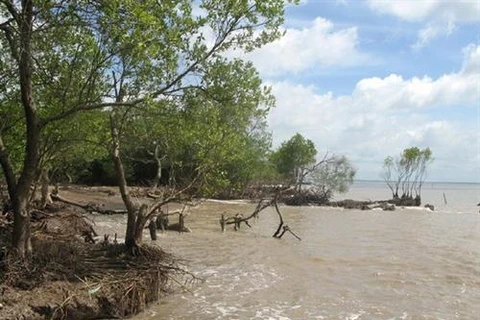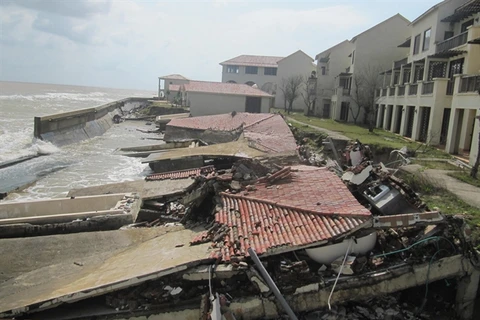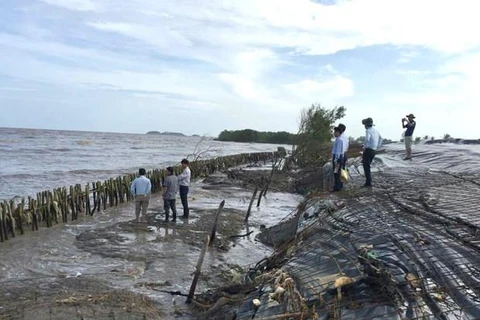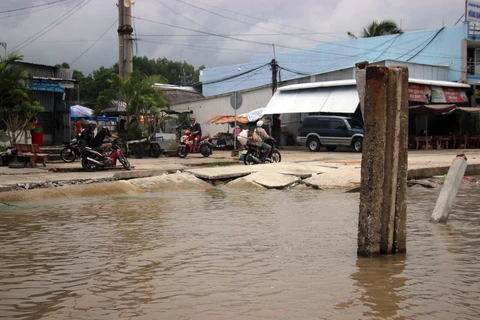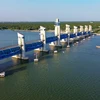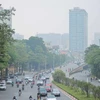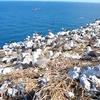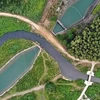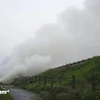 High waves and tides wash away sand, land and part of protective forest on the Cua Dai beach near Hoi An city. A large area of the beach has disappeared over past decades due to serious erosion. (Photo: VNA)
High waves and tides wash away sand, land and part of protective forest on the Cua Dai beach near Hoi An city. A large area of the beach has disappeared over past decades due to serious erosion. (Photo: VNA) Quang Nam (VNS/VNA) - The central province of Quang Nam has allocated a fund of 300 billion VND (13 million USD) to build an underwater dyke system protecting Cua Dai beach from erosion.
An official from the provincial Department of Agriculture and Rural Development confirmed to Vietnam News that the project, which will be built between 2020-2023, would be a protective solution for the beach after measures put in place over the past decades.
Deputy director of the department Vo Van Diem said the 1km long underwater dyke system will be built 200m from the beach to retain sand from tides and reinforce the beach.
“It’s a sustainable solution at the moment to save the beach from serious erosion. Concrete dykes could only protect the beach from high waves and tides, but sand at the bottom was washed away with a higher sea level rise and tides,” Diem said.
“A 1m high underwater dyke wall would pull back a huge amount of sand to build up a large sandbank on the beach. It’s a measure to protect the beach from erosion
“Of course, it’s not only one solution, but various measures (dredging of Cua Dai estuary, ban on illegal sand mining activities, forest plantation and overview of upstream hydropower plants) should be planned to stop the beach from disappearing,” he said.
He added the project will be assessed by experts and a technical council as well as seminars on the effectiveness of the system.
He said construction on the system would be commenced in the fourth quarter of this year after earning approval from the technical assessment council.
In 2012, a group of hotels and resorts on Cua Dai beach, in cooperation with partners in the Netherlands, proposed an underwater sea dyke as an emergency measure for the beach. But it failed to raise funds.
According to the latest report from Hoi An city, more than 20ha of beach washed away in 2009-14, and the Cua Dai beach area saw sea encroachment of 50-200m annually.
Nearly 200 billion VND (8 million USD) was used to build sea dykes or temporary embankments with bamboo and sandbags, as well as the Geotube sandbag to protect the beach, but a section of dyke on Cua Dai beach was broken by rising sea water and waves in 2017.
Experts said the beach stretched 200m just 10 years ago, but now it has narrowed to 40m due to rapid erosion and climate change. Nearly 70 percent of protective forest of Cua Dai beach was washed away by large waves, intense rains and a higher sea level since 2018.
A pristine stretch of sand spanning from An Bang beach to Cua Dai beach is a popular spot for foreign tourists in Hoi An.
An expert from Hoi An city blamed the erosion on the construction of resorts on the beach and the lack of proper environmental assessments before dredging the estuary. Construction of hydropower plants on the upstream Thu Bon River and the over-exploitation of sand were believed to have caused the shortage of muddy sand.
Hoi An city has been calling for investment in replanting 140ha of nipa palm (a species of palm native to the coastlines) along the Thu Bon river to reduce sand erosion in Cua Dai beach./.
VNA
